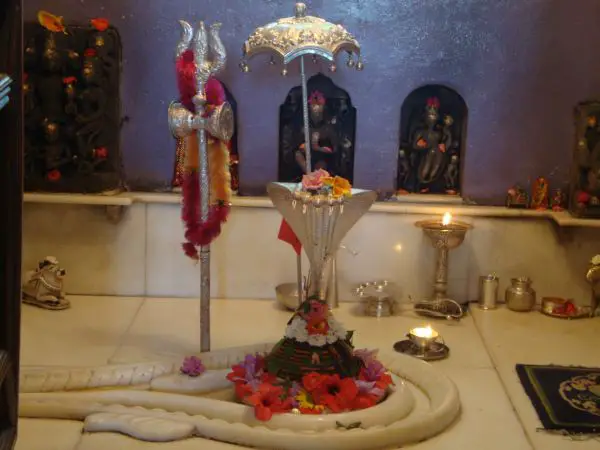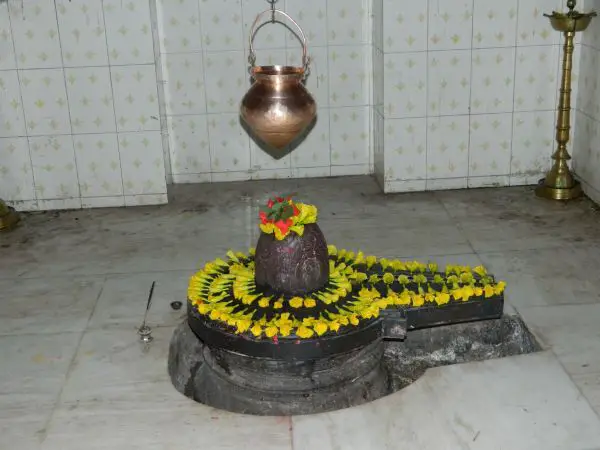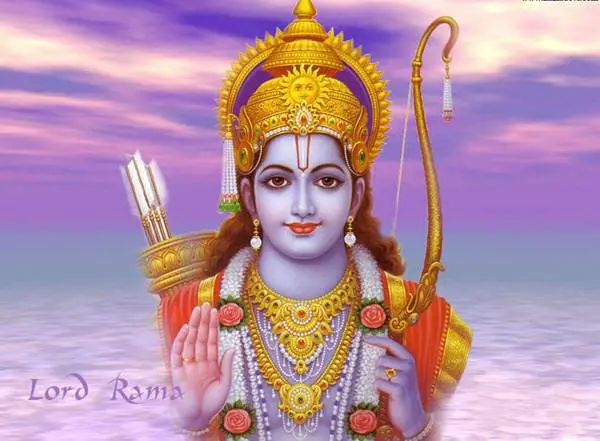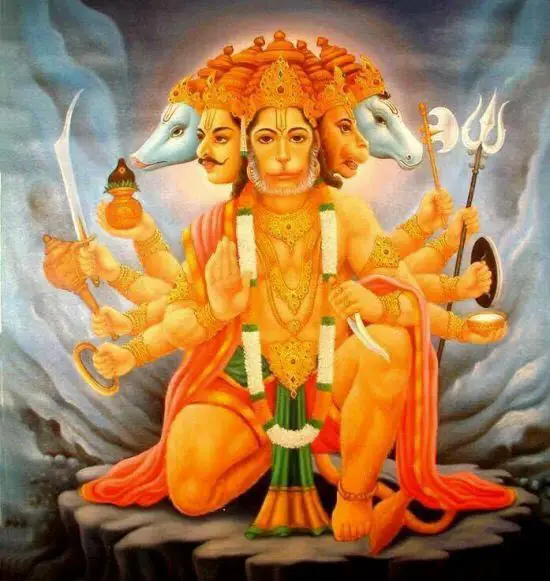Shiva Lingam or Shivling is considered to be the holy symbol of the Hindu God, Lord Shiva. It is a sacred representation of Lord Shiva and is worshiped in all Shiva Temples around the world.
From time immemorial, Lord Shiva is being worshiped in the form of Shiva Linga. It is a smooth cylindrical mass representing Lord Shiva and rests in a disc-shaped base (yoni) which symbolizes Goddess Shakti.
Table of Contents
Meaning of Shiva Lingam (Shivling)
In Sanskrit, Linga means a symbol or a mark, which points to an inference. Thus, Shiva Lingam is a symbol of Lord Shiva, the omnipotent Lord, who is formless. Hindus have regarded Shiva Linga as a symbol of energy, spirituality, and the extent of infinity. Shiva Linga or Shivling makes the worship of Lord Shiva simple while upholding the principle that God does not have any definite form.

Stories of Shiva Linga
There are various stories relating to the origin of Shiva Linga in Hindu Scriptures. However, here we describe two of the main stories linked to the origin of Shiva Linga.
Once, it so happened that Lord Brahma and Lord Vishnu got into a fierce battle over who was superior to the two Lords. The battle was so fierce that Lord Shiva had to intervene to calm down the battle. He appeared before them in the form of an enlightened pillar-shaped figure (a flaming Linga) and asked them to find the two ends of the column of the pillar.
Hearing this suggestion, Lord Vishnu took the form of a boar and headed toward the lower end of the flaming Linga. Lord Brahma took the form of a swan and flew upwards to find the upper end of the flaming Linga. Both of them traveled huge distances but failed to locate the ends of the enlightened pillar.
Lord Vishnu returned and accepted his defeat. However, Lord Brahma lied that he had found the upper end of the flaming Linga to be a ‘Ketki’ flower.
At this, the fire pillar got burst, and Lord Shiva appeared before them. He cursed Lord Brahma so that nobody would worship Him ever.
Afterward, the shape of the fire pillar was recognized as Shiva Linga and began to be worshiped by people.
Second Story
According to another story, there were a group of sages who were ardent devotees of Lord Shiva. To test the love and devotion of the sages, Lord Shiva disguised himself as an ‘Avadhooth’ (a naked person) and came to the forest of ‘Daaruk’ where those sages lived with their family.
The figure of Avadhooth befuddled the wives of some sages while others got attracted to him. When sages saw the Avadhooth, they cursed that his phallus should fall, and it happened.
However, the lingam started burning the places. The sages got worried and went to Lord Brahma for a solution.
Lord Brahma told the sages that they must request Goddess Parvati to take the form of yoni to hold the Lingam.
Afterward, the sages pleaded with Goddess Parvati, and she took the form of a yoni to hold the Lingam. The destruction was controlled, and the shape was known as Shiva Linga. It spread the message that life sustains itself by the male as well as female cosmic energy. Since then Shiva Linga was worshiped as a form of Lord Shiva.
Structure of Shiva Lingam
The structure of Shiva Linga is a rounded, elliptical, iconic image that stands on a circular base. According to Shiva Purana, Shiva Linga is a beginning-less and endless cosmic pillar of fire which is the cause of all origins in the universe.
It is considered as a form of Lord Shiva which is superior to Lord Brahma, Lord Vishnu, and all other Gods. According to Linga Purana, it represents the infinite nature of Lord Shiva. It is an oval-shaped structure that goes on to resemble the whole Universe. Its base holds the entire Universe.
According to Skanda Purana, Shiva Linga is described as an endless sky that holds the entire Universe. It is said that at the end of time, all the Gods and the entire universe finally merge in the Shiva Linga itself.
According to Yogic Lore, the entire Shiva Linga structure is divided into many parts. The oval-shaped Linga is considered to be Lord Shiva. The Linga is held by the Yoni (base) which represents Goddess Shakti. The middle part of the Shiva Linga represents Lord Vishnu, and the lowest part of the Lingam is considered to be a form of Lord Brahma. So all the Hindu Trinity Gods reside in a Shiva Lingam.
Other Interpretations and Meaning of Shiva Linga
Besides being a symbol and form of Lord Shiva, Shiva Linga has various other meanings. Here, are some of the popular theories related to Shiva Linga.
Worship of the Phallus: Some scholars are of the opinion that Shiva Linga represents the reproduction function in general. ‘Linga’ is a Sanskrit word that means phallus – the male reproductive organ. The base of the Lingam represents the Yoni which is the female reproductive organ. The presence of Linga and Yoni in a Shiva Linga is therefore considered to represent the process of copulation. The togetherness of Linga and Yoni in a Shiva Linga is equivalent to the process of creation, energy, and enlightenment.
The Tantra Insight for Shiva Linga
According to Tantric Scholars, Shiva Lingam represents Lord Shiva’s Phallus in spiritual form. They consider that the Lingam contains the source of the entire universe. It symbolizes the union of Shiva and Shakti, the union of cosmic male and female energy that is responsible for the creation of the Universe.
Shiva Linga as Creative, Protective, and Destructive Aspects of the Supreme Eternal God
A Shiva Linga is composed of three parts. The upper portion which carries the Linga is called the Pooja bhagam and represents Shiva. The “peetham” which is the base of the Shiva Linga represents Lord Vishnu and the part which is below the ground (Bhoomi) represents Lord Brahma. So, Shiva Linga in total is composed of 1/3 Shiva bhaga, 1/3 Vishnu bhaga, and 1/3 Brahma Bhaga.
Shiva Linga Interpretation in Puranas
According to Puranas, Shiva Linga came into existence as a result of a curse given by some sages to Bhagwan Shiva. Bhagwan Shiva’s phallus fell on earth and began to be worshiped as a spiritual symbol of Lord Shiva.
According to Linga Purana, Shiva Linga represents the formless Universe Bearer. The oval-shaped Linga represents the Universe, and the base symbolizes the Supreme Power holding the entire Universe in it. Whereas, the Shiva Purana describes Shiva Linga as the formless representation of Lord Shiva. The Skanda Purana describes Shiva Linga as the endless sky which contains the entire universe.
Shiva Linga: an Abstract Symbol of God
Many Hindu scholars are of the opinion that Shiva Lingam is an abstract symbol of God. It propagates the concept that God can be worshiped in any convenient form or shape. So, Shiva Linga represents the formless Supreme Being that creates, sustains, and destroys all the elements of the Universe. It represents the mark of the cosmos and is the symbol of the Eternal Brahman.
Types of Shiva Lingas
Shiva Lingas are distinguished according to the materials used to make them. Shiva Lingas are usually made of sandalwood paste, wood, stones, white marble, metal, mercury, gold, silver, etc. The geometrical shape of Shiva Linga also plays an important part in its creation. So, exact proportions of height, width, and curvature are all important in the formation of Shiva Linga. Some of the popular types of Shiva Lingas include:
Black Shiva Linga
It is one of the holiest types of Shiva Lingam with highly protective energies. It is made with stone found in the Narmada River. Worshipping this Shiva Linga charges the chakra system, boosts body vitality, and increases healing properties. It balances and strengthens the whole body.

White Marble Shiva Linga
This type of Shiva Lingam is made up of white marble. Worshipping this Shiva Linga removes negative thoughts. It is highly useful for meditation purposes and for improving concentration levels.

Parad Shiva Linga
This type of Shiva Linga has great importance for Hindu devotees. It is worshiped to get positive strength and prosperity.

So, we see that Shiva Lingam has varied meanings. It represents Lord Shiva and provides us with a convenient form to worship the Supreme Lord Shiva.
Note: We have written the story of Shivling after some research online. Some stories may not be true or misinterpreted so; please correct us if found wrong.
If you liked the article and found it informational, please share it with your friends and family.
Thank You.




